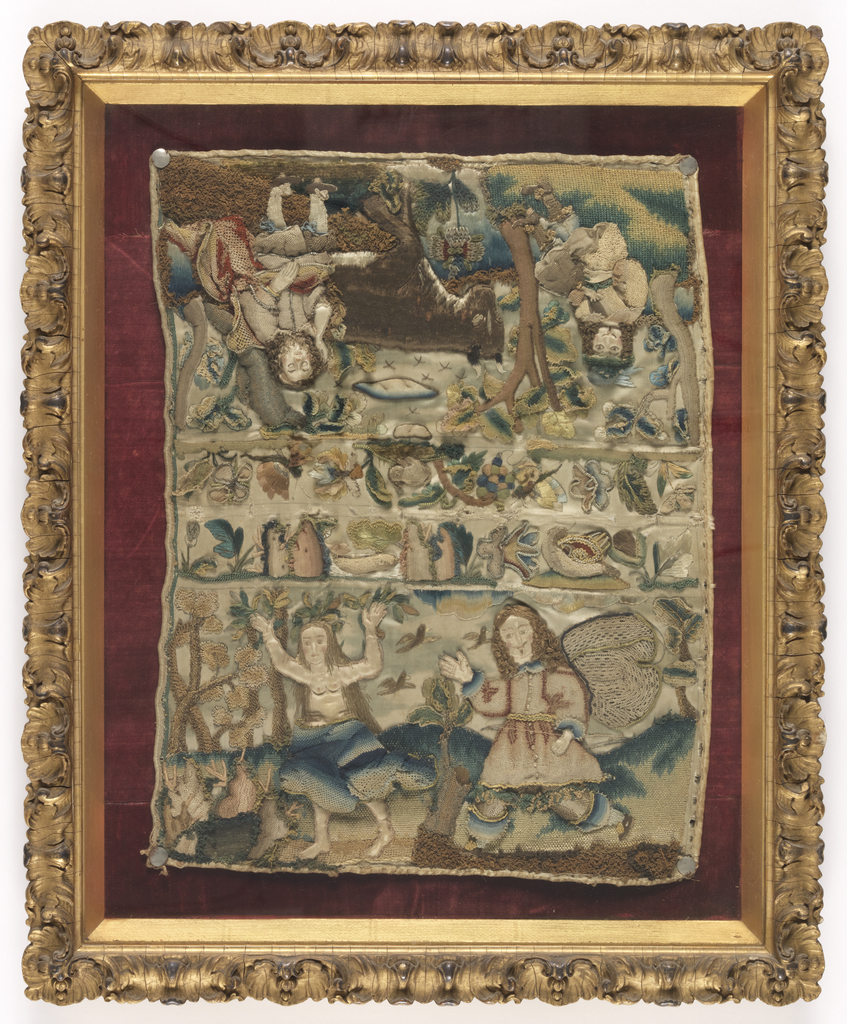My first introduction to stumpwork occurred as a young girl, when my Scottish-American grandmother taught me how to embroider samplers. We gradually advanced to creating pictures in raised embroidery using padding, wire, and different types of dimensional embroidery stitches.
Completed stumpwork pieces in major museums include purses and bags, framed pictures, and panels used on small caskets, which were used to hold women’s personal belongings. The casket panel in the Museum’s collection is embroidered on a silk foundation using metallic and silk threads. Needle looping and buttonhole stitch are used to create a raised effect, and both the male and female figures are padded and appear in relief. Often, the padding material used was either horsehair or wool felt. The purpose of Stumpwork panels was to tell stories. Scenes of royalty, flora and fauna, and biblical narratives were dominant themes.
Stumpwork became very popular around the time of the English Civil War in the mid-1600s. During this time period, peddlers traveled throughout the country selling silver and gold threads, cord, ribbons, gimp, tassels, beads, and semi-precious stones. Currently, there is a revival of Stumpwork. Many internet sites offer detailed patterns and instructions on how to re-create this truly spectacular style of embroidery. The sumptuous color combinations and rich use of materials are simply stunning! Not to mention the charm of these beautiful and very original hand-embroidered pieces.
Jean Pearson has been a volunteer docent at the Cooper Hewitt, Smithsonian Design Museum since 1989.
